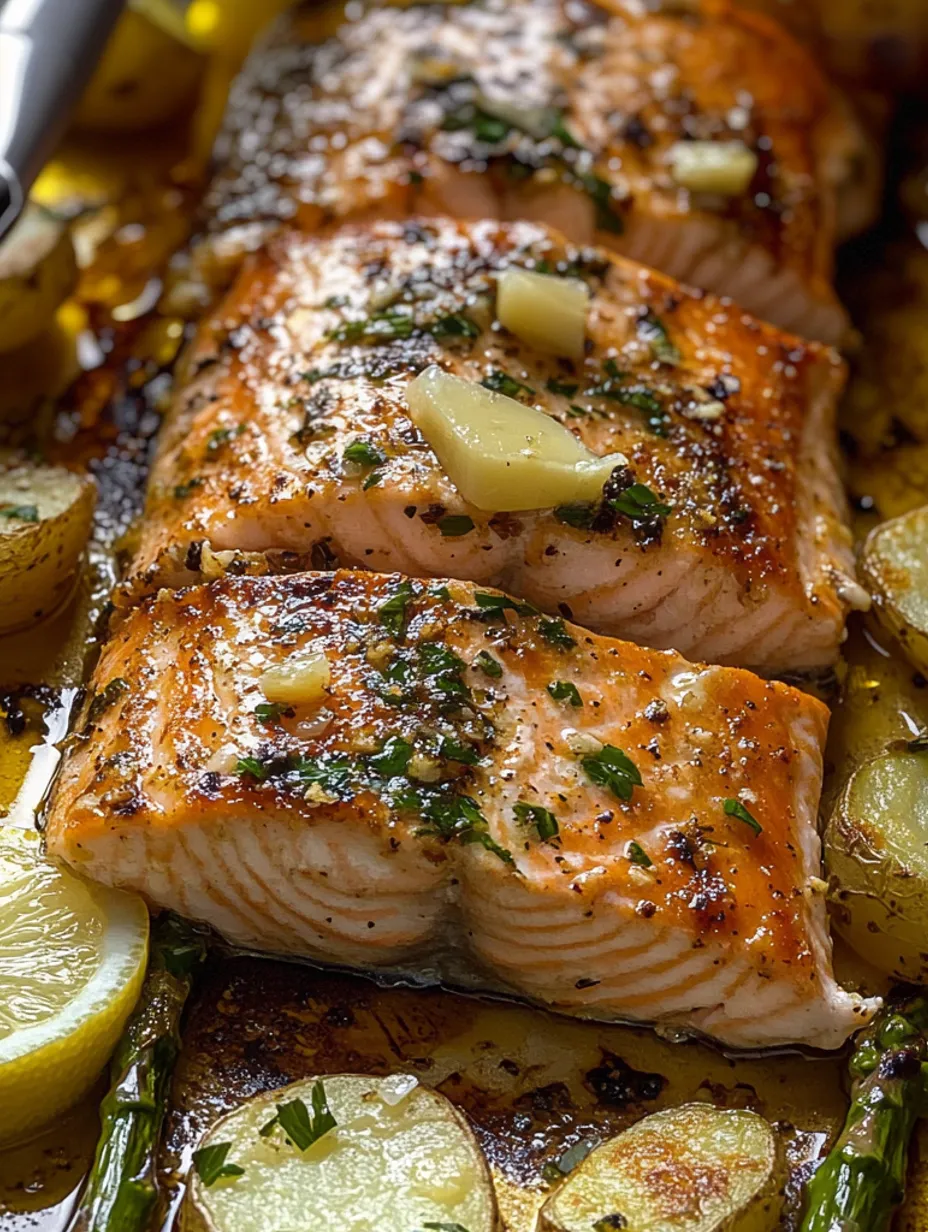 Save
Save
This sheet pan salmon dinner brings fancy restaurant vibes to your home without breaking a sweat. The one-tray combo features juicy salmon, crunchy potatoes, and fresh asparagus all soaked in a rich garlic butter that takes every bite from basic to amazing.
I came up with this meal during a super busy week when I wanted something that looked fancy but wasn't complicated. When my husband tasted it, he stopped talking mid-sentence and said, "When did you find time to cook this?" I've kept how easy it really is as my little secret until now—sometimes it's fun letting people think you slaved away in the kitchen!
Delicious Flavor-Creating Components
- Baby potatoes give you that awesome contrast of crispy outsides and soft insides—they're small enough to finish cooking right when the fish does
- Wild-caught salmon makes the best base for soaking up all these amazing flavors
- Real garlic adds a wonderful smell and taste that powder just can't match—don't hold back, it gets sweeter as it cooks
- Unsalted butter makes everything taste better—you can add salt yourself to get it just right
- Fresh lemon cuts through the richness with a nice zing—skip the bottled stuff
- A splash of white wine brings extra depth to the sauce—even a little bit makes a big difference
 Save
Save
Easy Cooking Steps
Getting Potatoes StartedFirst, heat your oven to 400°F. Mix your baby potato halves with olive oil, some of your chopped garlic, salt and pepper. Put them on your baking sheet and let them cook alone for 15 minutes. This gives them time to get golden outside and soft inside.
Adding The FishWhen the potatoes have had their alone time, push them to one side. Put your salmon pieces skin-down in the middle of the pan. Rub them with chopped garlic and fresh parsley, making sure to cover every bit. This direct contact lets all those good flavors soak right into the fish.
Fitting In VeggiesPut your cleaned asparagus on the empty part of the pan. This smart layout makes sure everything gets the right amount of heat while letting the flavors mix together. The asparagus will cook just right—tender but still with a nice bite.
Making It JuicyMix melted butter with fresh lemon juice and drizzle this yummy mixture over your salmon and asparagus. This simple combo works wonders by keeping the fish moist and creating a self-basting effect while it cooks. Finish with a sprinkle of salt and fresh black pepper.
Finishing TouchPut your pan back in the oven for about 10 minutes, until the salmon looks opaque and breaks apart easily with a fork. For extra browning, switch to the broiler for the last two minutes—keep an eye on it to catch that perfect moment when the edges turn golden and slightly charred.
I once cooked this for my mother-in-law who always says she "doesn't really like salmon." After we ate, I caught her secretly swiping the last bits of garlic butter from the pan with her finger. She's asked me to make it three more times since then, though she still claims she's "not a salmon person." Guess garlic butter can win over anyone!
What To Serve With It
This dish is pretty much a full meal by itself, but pairing it with a glass of the same white wine you used for cooking makes it even better. For fancy occasions, start with a simple green salad with lemon dressing, and maybe finish with something light like fresh berries and whipped cream to balance out the rich main dish.
Try These Twists
You can swap out asparagus for broccolini or green beans—both hold up well to roasting and love soaking up that garlic butter. Add fresh dill or thyme to the butter mixture for a different herby flavor. When oranges are in season, try using orange juice instead of lemon for a sweeter sauce that goes really well with the rich salmon.
Saving Leftovers
Keep any extra salmon apart from the veggies in sealed containers in the fridge for up to two days. Warm the salmon gently in a low oven (around 275°F) just until it's heated through so it doesn't dry out. The vegetables can handle higher heat and will get nice and crispy again under the broiler for a minute or two.
 Save
Save
Smart Cooking Tips
- Dry your salmon with paper towels before adding seasonings so they stick better and edges get crispier
- Make sure all potato pieces are the same size so they cook at the same rate
- For thicker asparagus, try peeling the bottom third to make them more tender
My grandpa was a fisherman who always told me that simple cooking shows off fresh seafood best. He'd probably question anything fancier than butter and lemon on his catch, but I think he'd actually like this dish. The garlic and herbs boost the salmon's natural taste instead of hiding it, making something that respects good ingredients while making them even tastier. Whenever I cook this, I remember him and what he taught me about honoring good food by keeping it simple.
Recipe FAQs
- → Can frozen salmon be used?
- Sure, just defrost fully and pat dry first. You might need a few extra baking minutes.
- → Any good swaps for asparagus?
- Try adding green beans, broccoli, or Brussels sprouts. Sturdier veggies should cook longer with potatoes.
- → Are skin-on fillets okay?
- Definitely! Place the fillets skin-side down on the tray. It helps lock in moisture and is easy to remove after cooking.
- → Can I prep it ahead?
- Yes, slice everything earlier! Keep potatoes in water in the fridge so they don’t brown.
- → How do I check if salmon’s done?
- Flake the salmon with a fork. It should be opaque, and a slightly transparent center works for medium texture.
- → What if I only have dried parsley?
- Go for 2 teaspoons of dried parsley instead of 2 tablespoons fresh. Dried herbs are more intense in flavor!
